Going Green:
A river runs through it
Did you know that the University of Delaware is one of only two universities
with a National Wild and Scenic River on its campus? The UD Farm, operated by
the College of Agriculture and Natural Resources (CANR), and much of UD’s main campus in Newark, Del., drain into Cool Run, a tributary of White Clay
Creek. The creek is now celebrating its tenth year with this ecological status
symbol.
Even with this designation, White Clay Creek still has its fair share of
environmental problems. Runoff from the campus and the city of Newark
contribute to nonpoint source pollution of area streams and excessive runoff
that causes downstream flooding. With stormwater management a major challenge
for the University and the city, UD is uniquely poised to both study and
protect the watershed.
The UD WATER Project (Watershed Action Team for Ecological Restoration) was
formed in early 2008 as a collaborative initiative with the long-term goal of
merging and facilitating University-wide efforts to minimize the environmental
impacts of stormwater runoff from the campus. The focus has been primarily on
ecological restoration of stream corridors, wetlands and other natural resource
areas on campus.
With funding support from the Dela-ware Water Resources Center at UD and the
nonpoint source pollution program at the Delaware Department of Natural
Resources and Environmental Control (DNREC), one of UD WATER’s first projects was to work with six undergraduate students during the 2008–2009 academic year to develop an action plan for the Cool Run watershed.
“The first part of our process was to identify the pathways by which water and
pollutants move through campus to the 350-acre farm and flow into Cool Run,” says Tom Sims, UD WATER co-director and CANR deputy dean. “Besides the obvious runoff from the farm, there is a considerable volume of
contaminated water from lawns, parking lots, roads and roofs.”
For the past three-and-a-half years, water quality has been monitored in these
flow paths. Now the college is using the research gathered from scientists and
students to systematically implement ecologically based best management
practices to mitigate pollution from agricultural, urban and campus sources and
reduce stormwater impacts on water quality.
In 2008, a poorly draining cow pasture on the farm was converted to a wetland.
UD students were involved in every aspect of the project, from site design and
installation to two rounds of planting. This wetland, now a part of the UD
Botanic Gardens, has been utilized as an outdoor classroom by landscape design,
landscape construction, ornithology, wildlife management and wildlife ecology
students.
Over the next several months, a degraded stream that delivers campus and farm
runoff to Cool Run will be restored, and a stormwater retrofit is planned to address building and parking lot runoff on south
campus.
“CANR is setting a great example on how to clean up the White Clay Creek. The
watershed restoration plan includes different facets like wetland restoration,
stream restoration, modern agriculture, conservation and even renewable energy,” says Gerald Kauffman, director of UD’s Water Resources Agency and UD WATER co-director alongside Sims.
“UD WATER and CANR are excellent models of watershed stewardship. We hope the
stormwater best management practices and wildlife habitat improvements in the
headwaters of Cool Run will spur others to similar action within the wild and
scenic watershed,” says Linda Stapleford, White Clay Creek Wild and Scenic River Administrator.
Jenny McDermott, CANR’s facilities manager, acknowledges the fact that these restoration projects
would not be possible without the help of partners internal and external to UD.
“Grant funding and assistance from several DNREC departments, the New Castle
Conservation District, and the University’s alumni-supported Sustainability Fund have been matched by funding from our
college to not only implement environmental protection but to provide a
teaching opportunity for students and a demonstration of watershed protection,” McDermott notes.
Ecological restoration projects also are underway to return degraded habitats to
healthy ecosystems, improve wildlife habitat and remove invasive plants. During
the summer of 2010, students and faculty conducted research on a UD site that
will serve as a “compensatory wetland” to balance the ecological functions of a wetland that is being removed due to
construction at the Port of Wilmington, according to Susan Barton, assistant
professor of plant science, who serves as a faculty adviser for the project.
“Five student interns will each work on an independent project that will
contribute to the formation of the wetland and the overall health of the farm,” Barton says.
Students are researching state and federal wetland mitigation policies and
monitoring water quality, aquatic insects, terrestrial invertebrates, plants
and birds.
“Our students are participating in every aspect of these projects, from
collecting baseline data to implementing recommendations and documenting and
monitoring successes,” Sims adds. “The discovery learning opportunities that this project offers are preparing
students well for careers in natural resources, agriculture and environmental
fields. They are solving real-world problems just steps from their classrooms.”
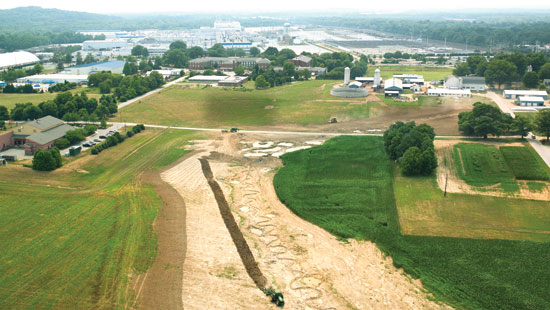 The Dairy, housing a herd of approximately 100 milk cows, is enhanced by solar power and a manure composting facility.
The Dairy, housing a herd of approximately 100 milk cows, is enhanced by solar power and a manure composting facility.
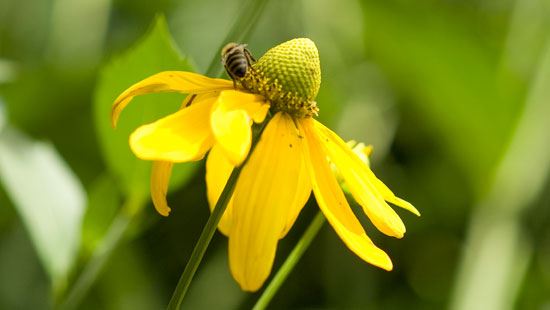 The UD Botanic Gardens encompasses 12 gardens on 15 acres on south campus. The Native Garden and new Lepidoptera Trail are ideal for observing birds, butterfies and moths on native perennial plants of the eastern U.S.
The UD Botanic Gardens encompasses 12 gardens on 15 acres on south campus. The Native Garden and new Lepidoptera Trail are ideal for observing birds, butterfies and moths on native perennial plants of the eastern U.S.
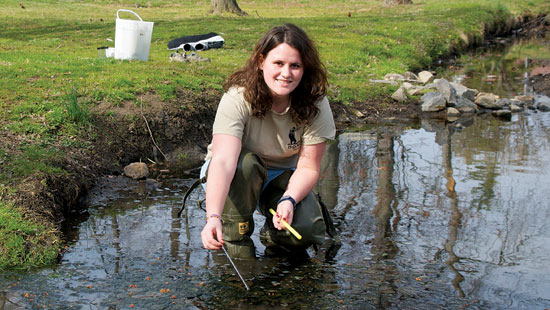 Water Quality Monitoring, conducted by UD, is supported by the White Clay Creek Watershed Management Committee. Data from eight sites will be used to assess the impact of the new restoration projects.
Water Quality Monitoring, conducted by UD, is supported by the White Clay Creek Watershed Management Committee. Data from eight sites will be used to assess the impact of the new restoration projects.
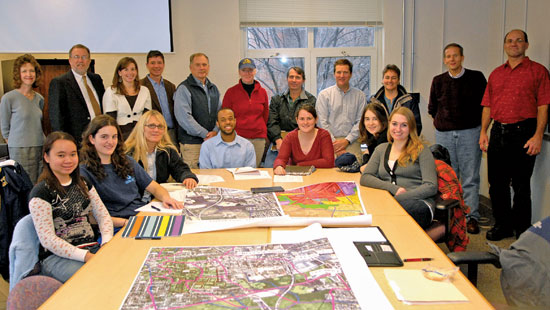 The UD Water Team brings together a consortium of faculty, staff and students from departments and disciplines across campus to implement creative stormwater management initiatives.
The UD Water Team brings together a consortium of faculty, staff and students from departments and disciplines across campus to implement creative stormwater management initiatives.
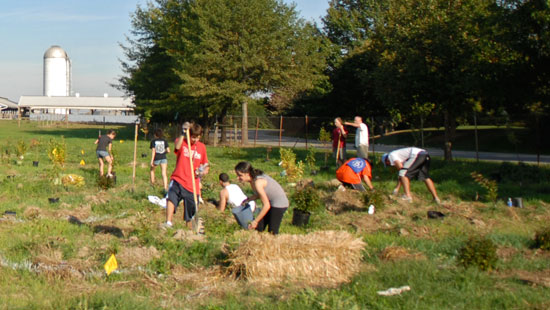 Wetland Restoration on the UD Farm was designed to improve water quality and enhance habitat. However, the ongoing project will also be used for research and teaching related to water quality, soils, ecology and horticulture.
Wetland Restoration on the UD Farm was designed to improve water quality and enhance habitat. However, the ongoing project will also be used for research and teaching related to water quality, soils, ecology and horticulture.








